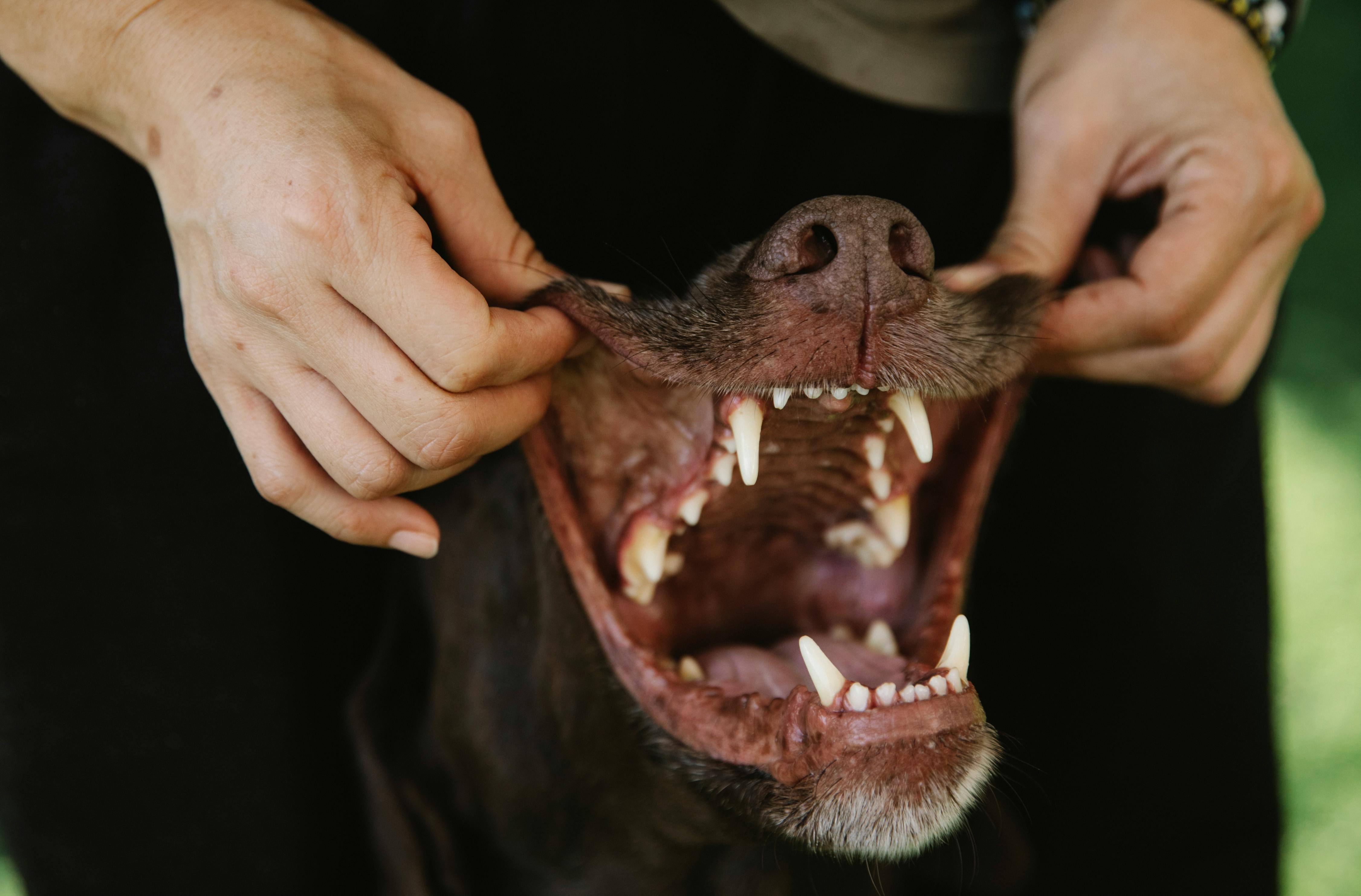Tooth Abscess in Dogs

These abscesses can occur for various reasons, and if left untreated, they may lead to severe health complications. This article will discuss the dangers of a dog tooth abscess, its causes, and treatment and prevention strategies to ensure your pet's well-being.
Understanding a Dog Tooth Abscess
A dog tooth abscess, also known as a dentoalveolar abscess, root abscess, or tooth infection, originates from the tooth's root. Essentially, it forms a pus-filled pocket due to bacterial invasion. Untreated tooth abscesses cause pain, swelling, inflammation, and other severe health problems. If your dog has an infected tooth, prompt and appropriate treatment is crucial to address the issue and prevent further complications.
Common Causes of a Dog Tooth Abscess
Tooth abscesses in dogs can result from various factors, including:
Tooth Trauma: Damage to a tooth, such as a fracture, can allow bacteria to enter the root canal, leading to infection.
Periodontal Disease: Bacterial infection in the mouth can damage the gums and supporting structures of the teeth, contributing to abscess development.
Dental Cavities: Deep cavities in a tooth can permit bacteria to infiltrate the innermost part of the tooth.
Dentigerous Cysts: While typically non-infected, these cysts can become abscesses when infected. Dentigerous tumors, though rare, can also lead to abscessed teeth.
Can a Dog Tooth Abscess Be Lethal?
Untreated abscesses can pose significant dangers. As an abscess progresses, the body struggles to combat the infection, leading to a deeper and more pervasive infection. An oronasal fistula can develop, creating a passage from the oral cavity to the nasal cavity. This opening can allow food particles to be inhaled, travel to the lungs, and result in pneumonia. Such complications could be life-threatening for your dog.
Recognizing the Symptoms
An abscessed tooth in dogs can manifest various symptoms, including:
Physical Signs:
- Swelling along the lower jaw or beneath the chin (for abscesses involving the roots of lower molar or premolar teeth).
- Swelling beneath the eye (for abscesses on the roots of the first upper molar and fourth upper premolar teeth).
- Pain.
- Preference for chewing on one side of the mouth.
- Pawing at the face.
- Bad breath.
- Red gums.
- Drooling or reluctance to eat due to pain.
- Reluctance to chew kibble.
- Swollen lymph nodes near the abscessed tooth.
Behavioral Signs:
- Excessive scratching at the face or mouth area.
- Avoiding being petted or touched, especially on the face.
- Refusal to eat or drink.
- Whining or crying.
- Aggression.
Recognizing these symptoms is crucial in determining if your dog has an abscessed tooth. Prompt veterinary attention is essential, Even when dogs may not display obvious pain.
Diagnosing a Tooth Root Abscess in Dogs
Diagnosing a tooth root abscess typically involves:
- A preliminary visual examination to identify signs of infection.
- Dental X-rays will be used to visualize the abscess and assess any impacted teeth.
- Treatment often occurs concurrently with a confirmed diagnosis.
Managing a Dog Tooth Abscess
When an abscess has progressed to a point necessitating veterinary intervention, your dog may require:
- Comprehensive dental cleaning and polishing.
- Removal of tartar buildup on the teeth and gum lines.
- Root canal therapy or tooth extraction can be used depending on the tooth's condition and infection severity.
- Antibiotics to control the infection.
- Pain medication for relief.
- Subgingival curettage in some cases.
Both root canal therapy and tooth extraction are performed under general anesthesia. Follow-up care may include soft food and activity restrictions for dogs that undergo extraction, whereas dogs treated with root canal therapy can often resume regular activity and nutrition quickly.
Regular dental check-ups are essential, with at least two visits per year recommended for all dogs. Dogs with a history of tooth abscesses may require more frequent dental examinations to ensure their oral health.
Can You Treat a Dog's Tooth Abscess at Home?
There are no effective home remedies to address the infection and pain caused by tooth abscesses in dogs. Prompt veterinary care is the only solution. While awaiting your dog's dental appointment, you can take specific measures to alleviate pain, including:
- Apply a compress to the affected area to prevent further white blood cell accumulation.
- Use pet-safe antiseptic mouth rinse or saltwater to maintain oral hygiene.
- Preventing your dog from scratching the area.
- Remove any hazardous objects your dog might chew on.
It's essential to follow up with proper veterinary care after dental surgery to prevent secondary infections or the recurrence of a root abscess.
Preventing Tooth Root Abscess in Dogs
Proper at-home oral care is the best way to prevent the pain associated with a tooth root abscess in dogs. This includes:
- Regularly brushing your dog's teeth.
- Scheduling annual dental cleanings.
- Conducting routine at-home oral examinations.
- Providing high-quality dog food.
- Avoiding hard bones.
- Offering safe dental chews.
By following these practices, you can ensure your dog's oral health and minimize the risk of tooth abscesses.
Get insurance plans with wide-ranging coverage options













